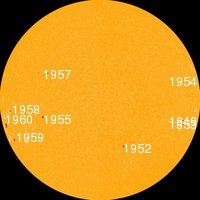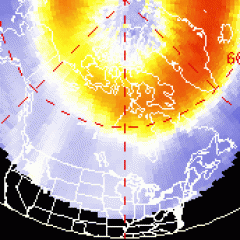~Space Weather Update~ New Sunspots~SOLAR SECTOR BOUNDARY CROSSING [1]
SOLAR SECTOR BOUNDARY CROSSING: High-latitude auroras are possible on Jan. 21st when Earth crosses through a fold in the heliospheric current sheet [2]. This is called a "solar sector boundary crossing," and NOAA forecasters estimate a 25% chance of polar geomagnetic storms when it occurs. Aurora alerts: text [3], voice [4].

Solar wind
speed: 301.4 km/sec
density: 3.3 protons/cm3
explanation [5] | more data [6]
Updated: Today at 1727 UT
X-ray Solar Flares
6-hr max: C1 1459 UT Jan20
24-hr: C3 0220 UT Jan20
explanation [7] | more data [8]
Updated: Today at: 1700 UT
![]()
Daily Sun: 20 Jan 14
A phalanx of new sunspots on the sun's southeastern limb poses a threat for M-class [10] solar flares, not Earth-directed. Credit: SDO/HMI
![]()
Sunspot number: 91
What is the sunspot number? [11]
Updated 19 Jan 2014
Spotless Days
Current Stretch: 0 days
2014 total: 0 days (0%)
2013 total: 0 days (0%)
2012 total: 0 days (0%)
2011 total: 2 days (<1%)
2010 total: 51 days (14%)
2009 total: 260 days (71%)
Update 19 Jan 2014
The Radio Sun
10.7 cm flux: 130 sfu
explanation [12] | more data [13]
Updated 19 Jan 2014
![]()
Current Auroral Oval:
Switch to: Europe, USA, New Zealand, Antarctica
Credit: NOAA/POES
![]()
Planetary K-index
Now: Kp= 1 quiet
24-hr max: Kp= 1 quiet
explanation [15] | more data [16]
Interplanetary Mag. Field
Btotal: 5.1 nT
Bz: 2.4 nT south
explanation [17] | more data [18]
Updated: Today at 1727 UT
![]()
Coronal Holes: 18 Jan 14
Solar wind flowing from the indicated coronal hole could reach Earth on Jan. 22-23.. Credit: SDO/AIA.


